Not long ago, Iceland used to be unknown to many. Some people did not even know anything about the country's culture, let alone Iceland's location. Oh, how things have changed! Nowadays, Iceland is a must on every traveler's bucket list. And how come? Well, it seems that the world discovered a hidden pearl on the North Atlantic Ocean and the beauty of Iceland's landscape.
Iceland, located northwest of the UK, is an island with a plateau of mountain peaks and glaciers, with fjord-lined coasts; roughly the size of Kentucky. This Nordic island has an abundance of landscapes, from the typical Iceland volcanic landscape to glaciers, black sand beaches, glacial rivers, and fields of fumaroles. Iceland is a country that leaves no one indifferent!
Therefore, if you want to know what you can expect from Iceland or have already decided to visit it, join us in this article. We will detail Iceland scenery in Winter, Iceland scenery in summer, and everything you can and see and discover along the way. Let's get started!
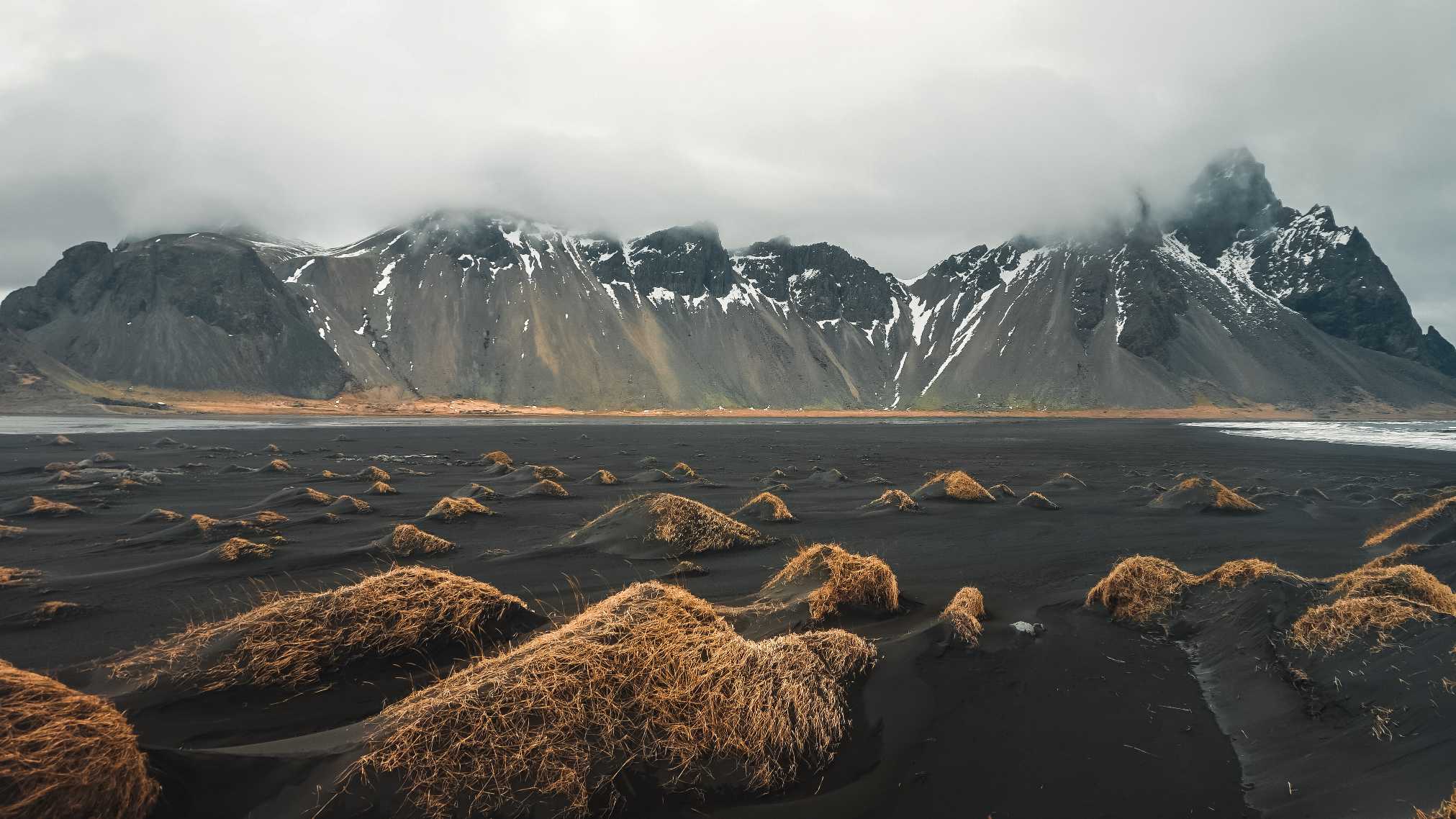
Iceland Scenery: How was Iceland formed?
Before starting our journey through one of the most impressive corners of this planet, we must know how Iceland was formed since this complex process is what has created the unique and remarkable landscapes of Iceland.
Iceland is a country that is located in the North Atlantic Ocean. Its location is not the result of chance and fate; instead, it is a consequence of the forces of nature gathered here. And it is that, below Iceland's soil, we find the border between two tectonic plates: the mid-Atlantic ridge formed by the North American Plate and the Eurasian plate.
This ridge is of the divergent type; instead of tending to join, they tend to pull away from each other. They are in constant motion, so earthquakes in Iceland are therefore common. The area is seismically and geologically very active.
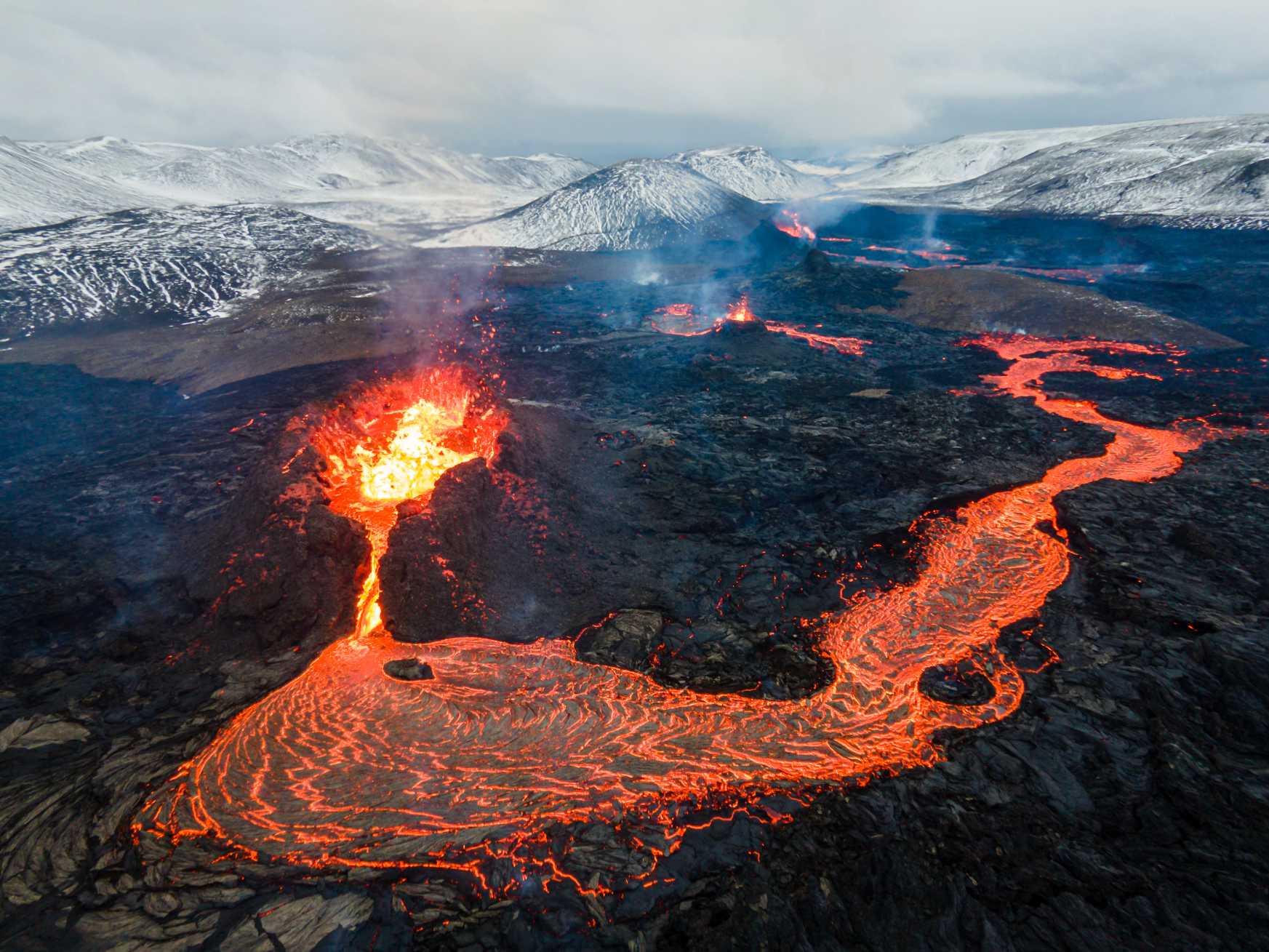
In areas as active as this, there is usually the presence of scorching magma high-pressure accumulations and regions accumulated over millions of years. And all that, obviously, has to come out, someway, somehow. What's the final result, then? An island like Iceland.
The most common way to relieve that pressure is through volcanoes. Bear in mind that not all volcanoes come in the typical mountains above sea level we see in most movies. Some are hidden underwater, but they are equally or even more powerful. After a series of intense submarine volcanic eruptions in the mid-Atlantic ridge, the lava that erupted solidified, forming what we now know as Iceland. The island is tremendously young geologically speaking: it is only 20 million years old.
This unique location, the result of the most unstoppable forces of nature, created landscapes that will make you believe that you are not on planet earth.
What is the geographic landscape of Iceland?
The Icelandic landscape is highly varied, with most Icelandic land made up of plateaus, valleys, mountain peaks and cliffs, and fertile lowlands. The Vatnajökull glacier, located within the Vatnajökull National Park, covers 8% of the island, and counting lakes and glaciers, they cover 14.3% of the entire country.
Iceland is a land where fjords abound throughout its 4970 km of coastline. Due to its location, climate, and geology, only 23% of the country is covered with vegetation. How about we get to know the Icelandic landscape a little more in detail?
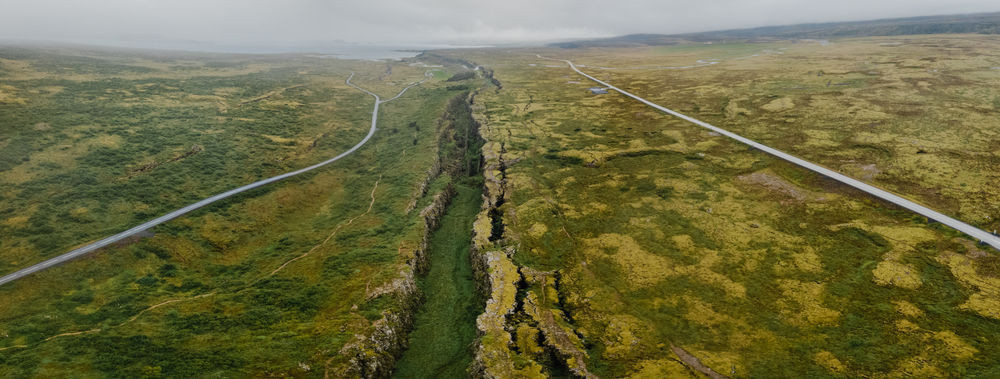
Icelandic soil: Amazing rock formations in Iceland
Icelandic soil is composed of basalt, solidified lava, and silica, albeit at low levels. Apart from these rocks, rhyolites and andesites can also be found in Iceland. Rhyolite is like a kind of greyish volcanic granite, and the andesite rock is one of the most common volcanic rocks on earth; it is reddish and can also be found on planets like Mars.
If you want to see rock formations in Iceland in various presentations, these are some of the sites that we recommend:
Lava fields in Iceland:
- Eldhraun Lava field: 565 km2 of solidified lava and Icelandic moss.
- Krafla: Lava and ash areas, this time without moss, totally different from Eldhraun.
- Geirlandshraun: High-walled lava field that forms an impressive canyon.
- Berserkjahraun: lava field over 3,000 years old.Caves and lava tunnels in Iceland:
- Vatnhellir Cave: old I had lava cave that is 8000 years old.
- Thrihnjukagigur Cave: a big vertical lava tube that is inside of a dormant volcano.
- Lofthellir: a lava cave located in a lava field. It has a plethora of beautiful ice formations.
- Gjabakkahellir Cave: formed 9000 years ago, and it is easily accessible. It is open on both ends, so it is a fantastic option if you don't like to be in closed places.
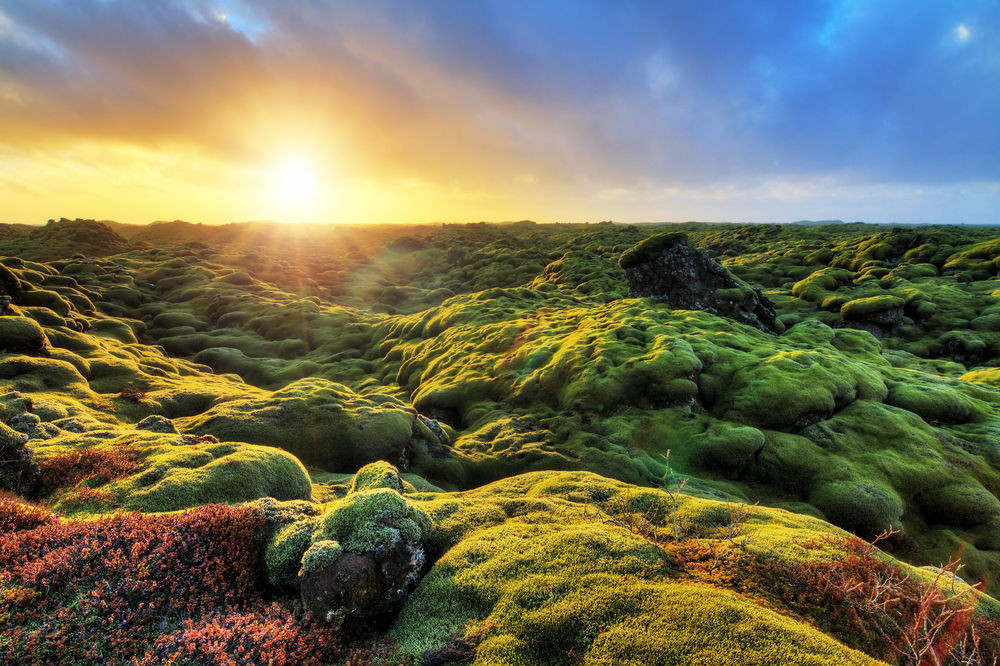
Icelandic basalt columns
- Svartifoss waterfall: a spectacular waterfall with dark basalt pillars as a background.
- Basalt Columns at Reynisfjara beach: the columns make up the cliff face of this beautiful beach.
- Stuðlagil canyon: a picturesque canyon contrasting with the turquoise waters of the river.
- Gerðuberg basalt column cliff: this is the most massive example of basalt columns in Iceland! Hundreds of basalt columns stack by a cliff.
- Arnarstapi - Gatklettur - Hellnar: this trail along the coast includes a natural bridge made of basalt columns.
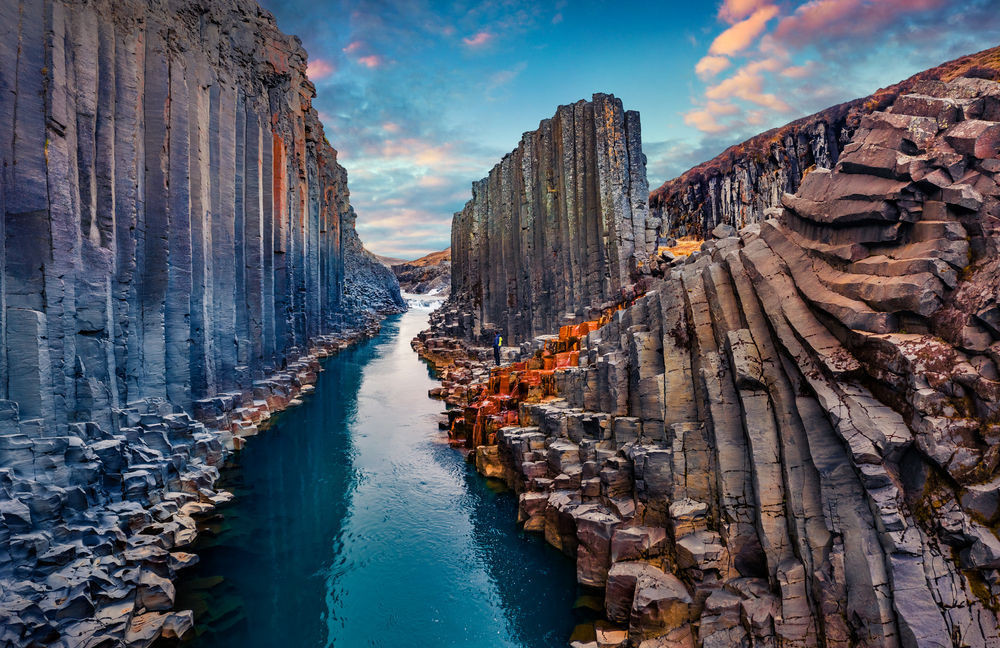
Iceland Rhyolite mountains:
- Ljósártungur: in the highlands of Iceland, a beautiful mountain made of rhyolite.
- Landmannalaugar: one of the best places to see multiple colored rhyolite mountains.
- Lonsoraefi Stafafell Rhyolite Mountain
- Hvanngil gorge
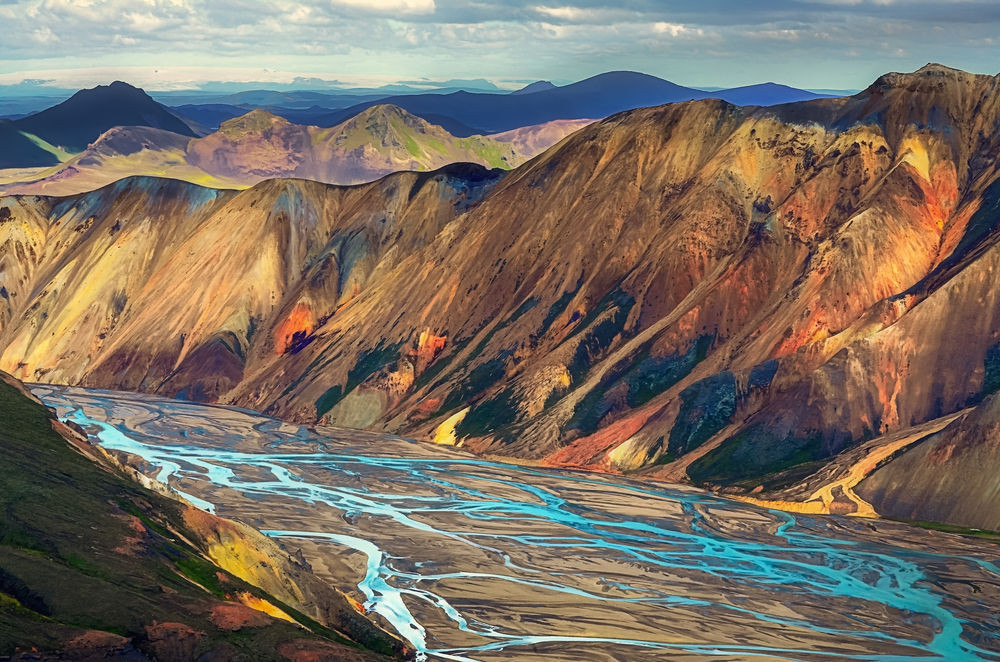
Can you see molten lava in Iceland?
It is currently not possible. There must generally be an erupting volcano to see this type of lava, and no eruption is "Tourist-friendly". Do consider that volcanic eruptions are usually violent. If not, there are dangers related to the level of toxic gases and ash released into the atmosphere. Usually, the safe distance for this type of eruption is about 30 kilometers or more.
Volcanoes in Iceland
This country's nickname is not "The land of fire and ice" just because. As we mentioned before, Iceland is on a geologically hot spot area, so there are quite a few volcanoes on the island, tourists can visit them, or you can walk into its crater. These are the most impressive volcanoes in Iceland:
- Katla: is one of the busiest in the country.
- Hekla: It was known as "the gate of hell."
- Grímsvötn: had a small eruption in 2011.
- Askja Caldera: indispensable! You have a lake in its volcanic crater where you can swim. The area is impressive.
- Eyjafjallajökull: it will sound familiar because he was the one who created chaos throughout Europe in 2010.
- Bárðarbunga: another active volcano today.
- Eldfell: located in Vestmannaeyjar (Westman Islands).
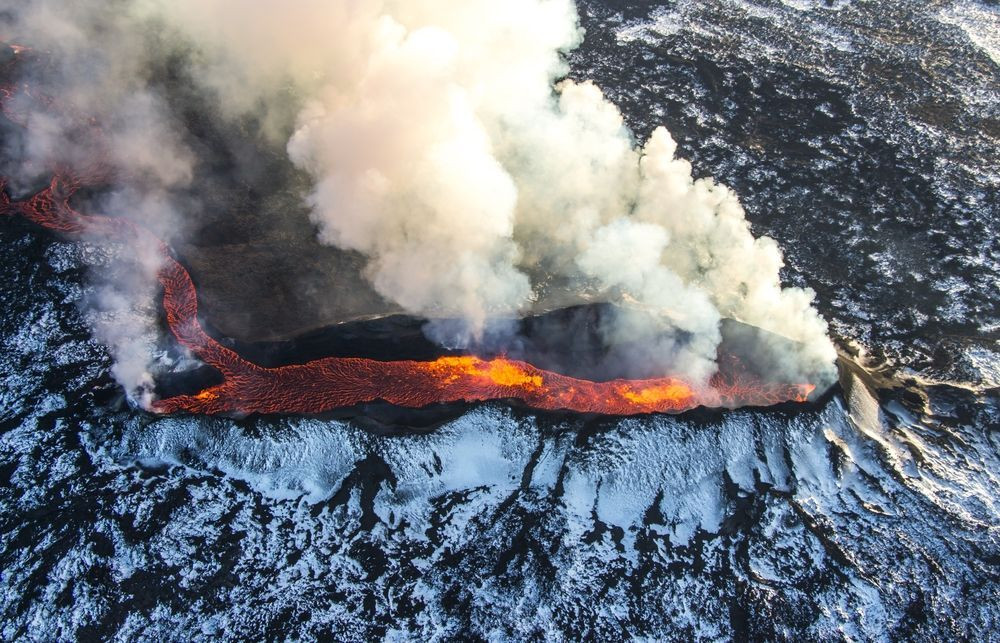
Black sand beaches in Iceland
One of the direct consequences of Iceland being a volcanic island is that most of the rock it forms is precisely solidified lava. Lava rocks have a striking black color. As you know, the sand on the beaches is formed by the rocks' erosion over time. And if the stones are black, then the beach will be black sand.
These types of beaches are not unique to Iceland, but they are usually quite common here. So common that it is rare to find white or golden sand beaches, although there are a couple of them on the island. Among the most impressive black sand beaches in Iceland, you can find:
- Reynisfjara
- Solheimasandur
- Diamond beach
- Stokksnes
- Djúpalónssandur
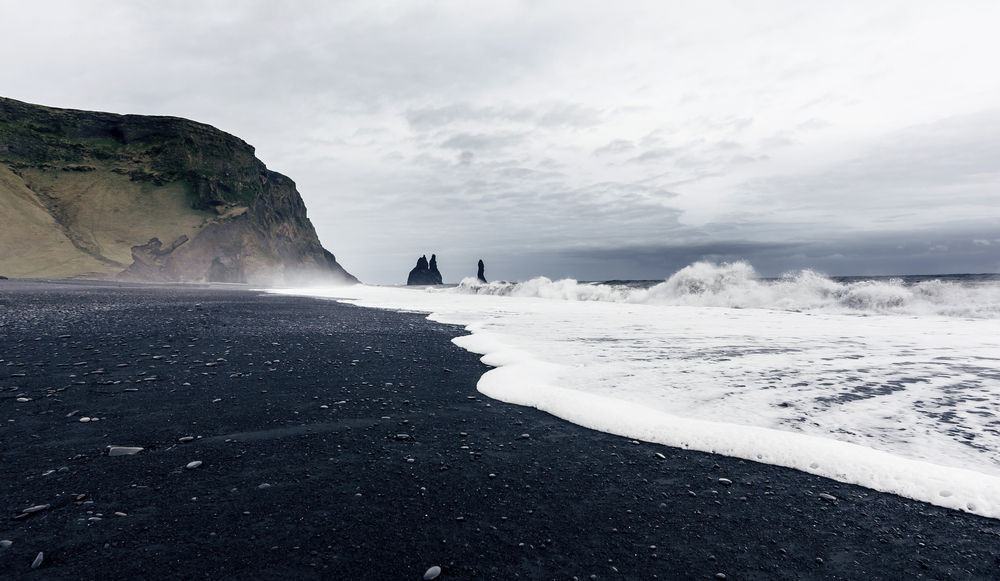
Icelandic glaciers
Glaciers alone cover more than 10% of Iceland's total area. Glaciers are vast masses of ice that usually form high up in the mountains. It is snow accumulated over time that never melts. The layers get accumulated, and the increasing weight generates pressure.
This pressure ends up turning the snow into layers of ice. As the glacier grows in size and weight, it begins to press on the ground where it is located and ends up slowly descending the mountainside in the shape of a tongue. All of that takes thousands of years to form.
Why are there so many glaciers in Iceland?
Iceland's glaciers were formed during times of the ice age when temperatures were quite freezing. Over the centuries, the climate of Iceland and the height of its mountains has allowed that frozen mass that formed over the years to remain that way.
The country is near the North Pole, and snows are quite common. So, the country has both the temperature and the snow necessary to create glaciers. Unfortunately, this is changing little by little due to climate change, and the weather will no longer be so benevolent with the glaciers. Some of Iceland's glaciers, like the Okjökull glacier, have already gone extinct.
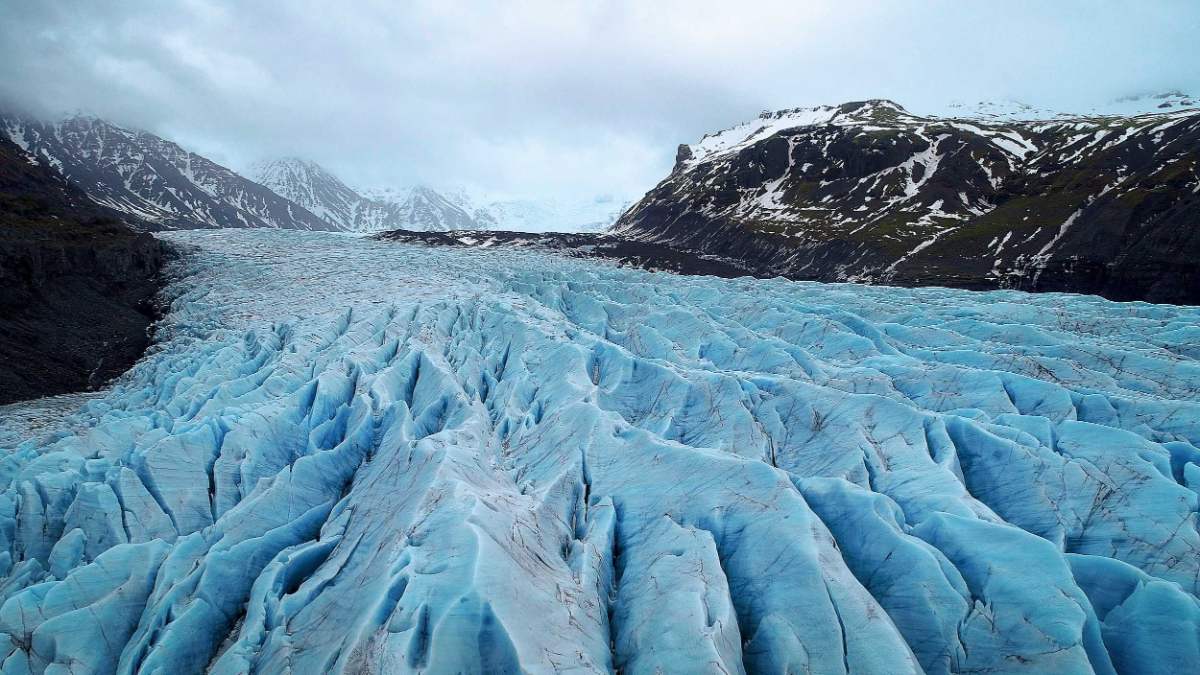
The best glaciers in Iceland:
Here you have some of the most famous and impressive glaciers in Iceland. It is possible to visit them and carry out multiple activities in them.
- Vatnajökull Glacier: the largest glacier in all of Europe.
- Langjökull glacier
- Hofsjökull glacier
- Eyjafjallajökull glacier
- Mýrdalsjökull
- Drangajökull
- Sólheimajökull
- Snaefellsjökull
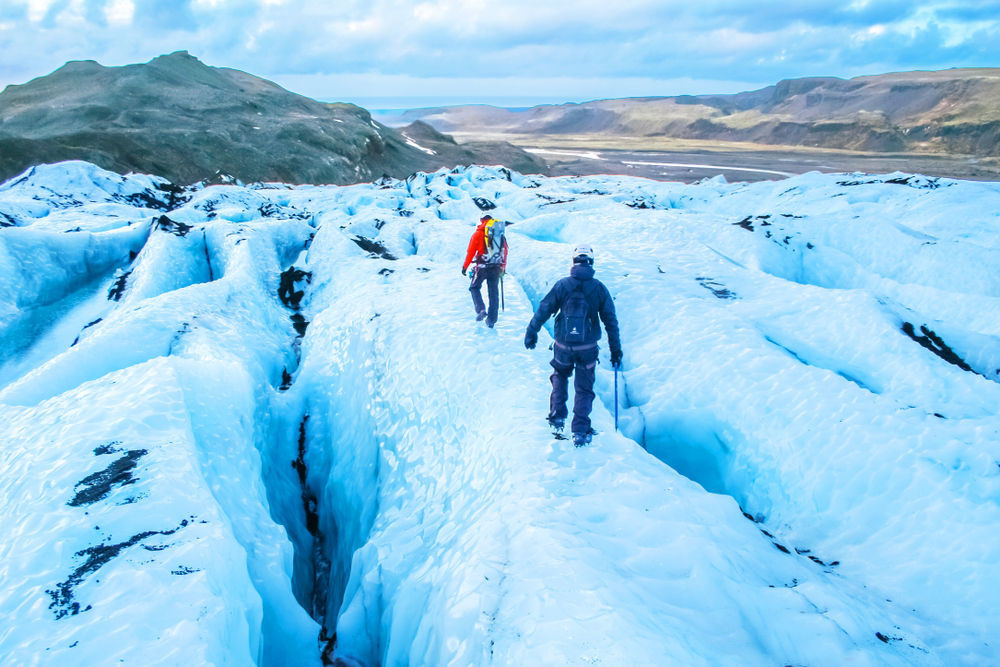
Fjords in Iceland
Fjords are valleys or U-shaped landforms. It is a kind of narrow entrance to the sea. And these valleys usually exist as a direct consequence of a glacier action; when it moves, it erodes the rock until it reaches the sea, and finally, the valley is flooded. And as we have seen before, Iceland and glaciers often go hand in hand.
As you go along the main road or Ring Road, you will find these wonders of nature that are always present in every list of top things to do in Iceland. There are quite a few fjords in Iceland in the east, north, and west of the country, all of them impressive.
Those from the east are usually visited more for ease of access; they are usually those from the east. Not all visitors have enough time to explore more remote areas like the western fjords. But if you have time and the right rental car in Iceland, this is a small sample of the fjords to visit throughout Iceland:
- Borgarfjörður Eystri
- Seyðisfjörður
- Hólmanes peninsula, Eskifjörður
- Skagafjörður
- Eyjafjörður
- Westfjords
- Arnarfjörður
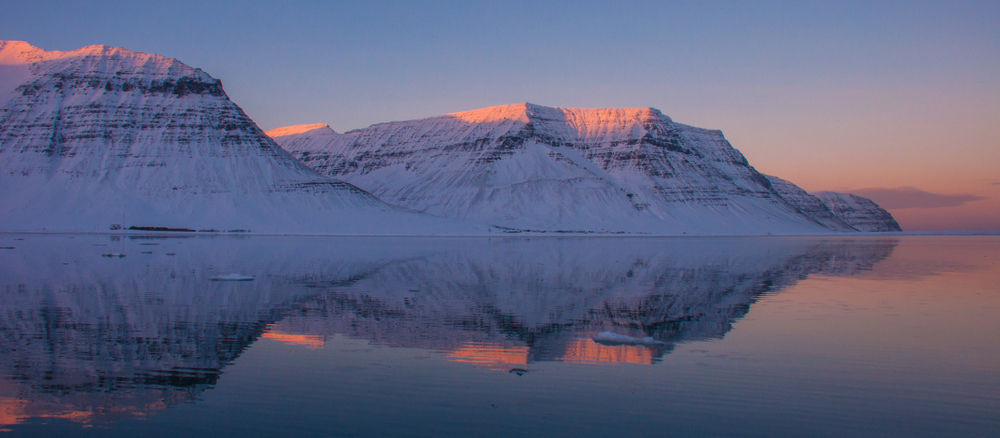
Iceland scenery winter
I bet you've experienced this before. You went to visit a place in a specific season, and when you came back to the same site in a different season, everything seems to be tremendously different. And it is that the seasons and the weather also add an extra touch to everything we see and live.
Iceland is one of those countries where the difference between seasons is quite striking. Both in temperatures and aesthetics and the way the landscape changes. In Icelandic winter, we can say that it is a kind of wonder Winterland. Of those, we see on Christmas postcards.
If you come to Iceland in winter, you will find snowy fields, where the white snow contrasts with the jet black of the solidified lava. Snowy peaks are combining colors with the rocks. The green that from time to time appears between the pristine white of the snow. But the jewel that Icelandic winter gives us is nothing more and nothing less than the Northern Lights.
The Northern Lights in Iceland
Indeed, Iceland's northern lights are not geological formations, but they are certainly part of the Icelandic landscape. And what a bonus! If the topography of these Nordic land is quite a spectacle if we add dancing lights in the Icelandic winter's dark skies, what more could we ask for?
Since viewing them requires pitch-black nights, little light pollution, and clear skies, viewing them may only be possible during the year's colder seasons.
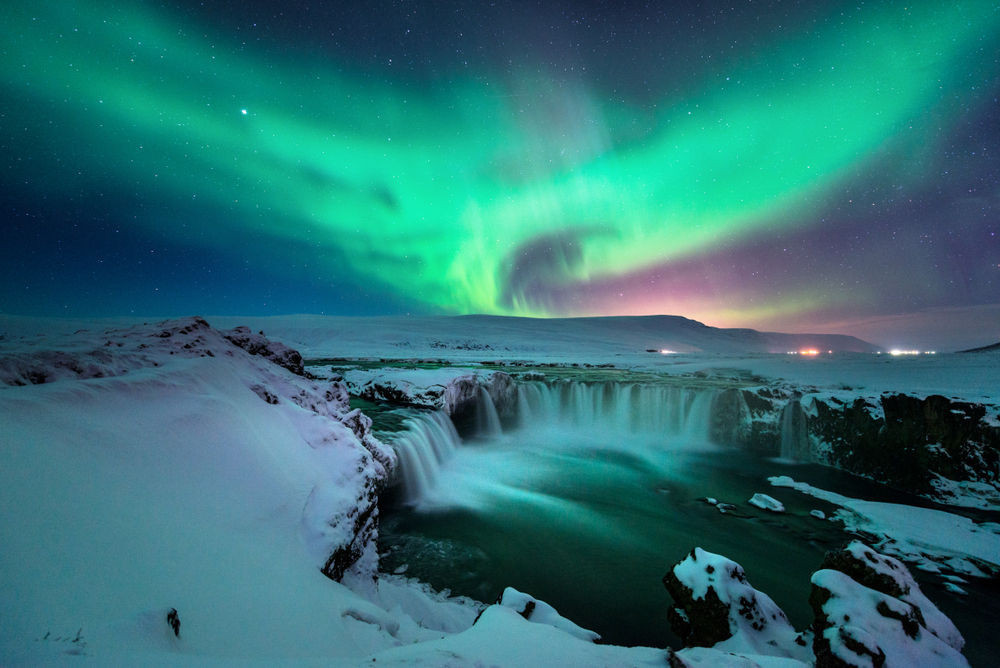
Iceland scenery summer
Summer instead brings us green fields, much more pleasant temperatures, waterfalls, and rivers flowing without ice in between. If you thought that everything beautiful in Iceland could only be enjoyed in winter, you are very wrong.
The summer season is also full of magic. Indeed, the Northern Lights cannot be seen in summer, but we have something in return: Iceland's midnight sun.
The midnight sun in Iceland
Due to the location so far north of the country, the sun does not cross the horizon line when summer arrives. That means that the sun does not get to set, and therefore, the days never end, and the night never comes. This allows you to do activities almost 24 hours a day, and although at 00:00 it is not a bright golden sun, you do have that beautiful sunset light illuminating the Icelandic landscape. Quite a show!
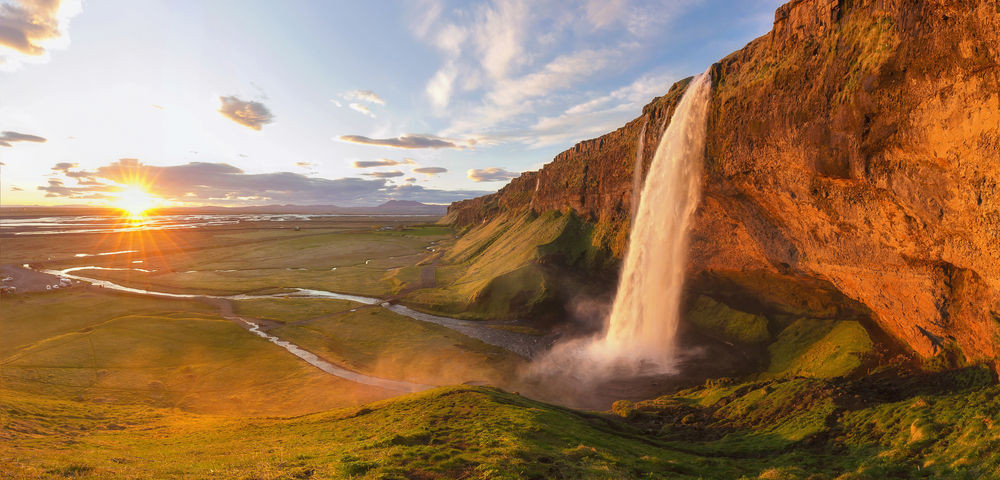
Iceland Ring Road Scenery
If you wonder what you can see of everything we have commented on throughout this article, the answer is everything! Iceland's Ring Road is the road that surrounds Iceland through the outermost part of the country. Most of the stops and points to visit are usually close to this road. Other places do need you to detour or take mountain roads or Iceland's F-Roads.
Even so, if you drive your rental car from Reykjavik along the Ring Road, you will have the opportunity to enjoy each and every wonder that Iceland has to offer. It would be best to plan your itinerary well to use your time in the best possible way.
Describing the Scenery of Iceland
As you can see, describing the scenery of Iceland can be simple, but at the same time quite complicated. The word that probably sums it all up would be: "majestic." But the Icelandic landscape is so unique; it has so much variety, shapes, and colors. Showing just one part would be totally unfair.
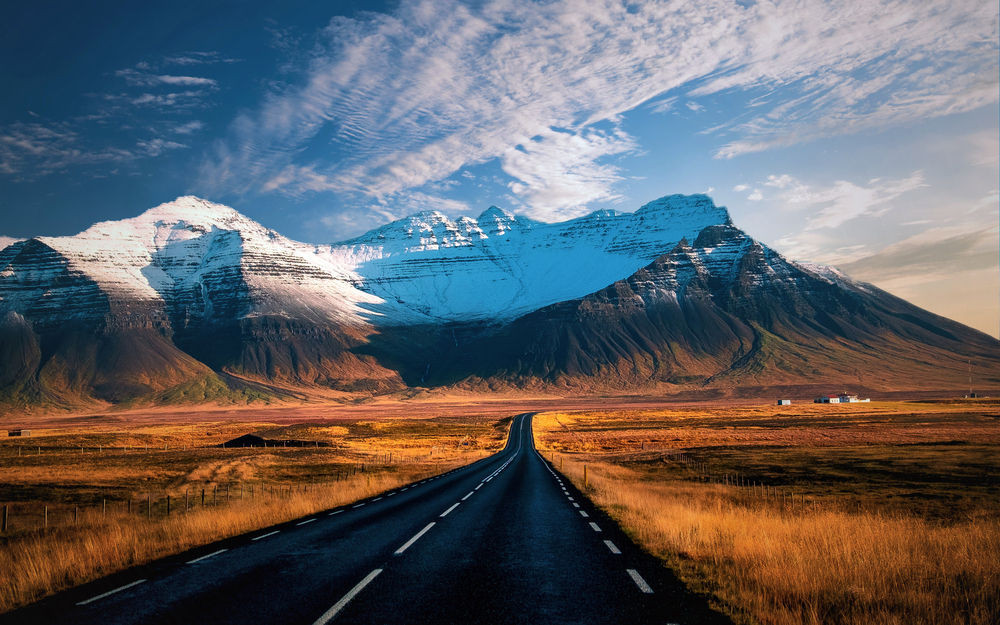
When people ask me to describe the Icelandic landscape, I often say that it is shocking. Sometimes you have the feeling of being in a remote and humid paradise on earth. Other times, it is easy to think that you have gone on a mission with NASA to visit another planet or even the moon. Iceland's landscape is certainly awe-inspiring, but something that helps make it even more impressive is the feeling of solitude.
On the contrary, this is not bad; it allows us to regain that feeling of connection with Mother Nature, remember what we were, what we are, and what we can be. You alone, amid the immense beauty of creation, can be the perfect definition of happiness.
Therefore, if you have the opportunity to come to Iceland, do not hesitate. Do not get carried away by fear of prices being too high or the temperature being too cold. There are a thousand ways to travel through this country, and many are suitable for all budgets and circumstances. Some things must be seen at least once in a lifetime, and I would dare to say that Iceland is one of them.


 By
By


